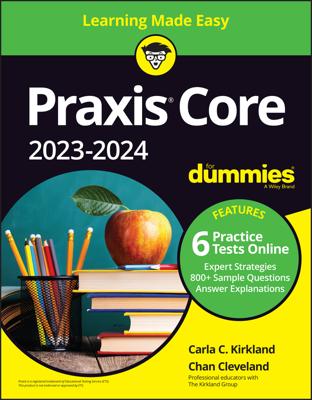Commas are common in writing, but Praxis test takers often complain that they know little about using them. It may be a little gross, but you may find it helpful to think of commas as the scars that are left when a sentence is operated on.
The “operation” may be a “transplant,” wherein a portion of the sentence is moved elsewhere (for example, placing a subordinate clause before the main independent clause instead of after it), or it may be a “graft,” wherein two elements of a sentence are spliced together (for example, making two independent clauses into one sentence or adding extra information to an independent clause).
Comma placement is determined by what is happening at a given point in the sentence. There are six situations in which commas are necessary.
Joining two or more independent clauses
A comma is always necessary if there is more than one independent clause in the sentence (unless another punctuation mark, such as a semicolon, colon, or dash, does the job). For example, when combining the independent clauses “There was no school” and “I went to the beach,” you end up with “There was no school, so I went to the beach.”
A coordinating conjunction is absolutely required after the comma. In cases where more than two independent clauses are being combined, a comma is still required after each one, but the coordinating conjunction is only necessary before the last, as in “Ben plays guitar, Brian plays bass, and Scott plays drums.”
Following an introductory clause
When the sentence opens with a non-independent clause or phrase, a comma is required after the introductory clause/phrase and the subsequent independent clause. For example, “In order to pass the test, you must study.”
Whether a clause is independent or non-independent, as well as whether a comma is required, has nothing to do with the length of the sentence.
You can have a long independent clause preceded by an introductory clause as brief as a single word in length (“Relieved, he called his friends and family to tell them how well he did on the test”), or you can have a brief independent clause preceded by a fairly lengthy dependent one (“Saddened by all the sorrow and confusion in this crazy, modern world of ours, he wept”).
Before an “afterthought” clause
An “afterthought” clause is like an introductory clause, but it comes after the independent clause instead of before it. Be aware, however, that a dependent clause beginning with a subordinating conjunction is not an afterthought clause and does not need to be preceded by a comma (although it does need to be followed by one if it comes first).
Examples of sentences with afterthought clauses include “I don’t need a tune-up, just an oil change” and “I saw my two favorite animals at the zoo, lemurs and red pandas.”
On both sides of an appositive/“interrupting” clause
When a non-independent clause or phrase comes in the middle of an independent clause, it needs to be set off with commas on both sides. For example, the second sentence in the afterthought-clause section could also have taken the form of “I saw my two favorite animals, lemurs and red pandas, at the zoo.”
There’s no rhyme or reason to which part of the sentence has to be the appositive; it all depends on how you feel like writing it: You can say either “Abraham Lincoln, the 16th president, was the first president with a beard” or “The 16th president, Abraham Lincoln, was the first president with a beard.”
There are some other types of interrupting clauses that aren’t technically appositives but still need to be set off with commas. A which clause is a good example, as in “Halloween, which was called Samhain by the Celts, is my favorite holiday.”
Certain types of interrupting clauses or phrases can be as short as one or two words, like for example or however (as in “This sentence, for example, has a very short interrupting clause in the middle”).
Whenever any type of phrase or clause falls in the middle of a single independent clause, it needs to have commas on both sides.
Separating items in a list
Commas are used to separate the items in the list. You may be listing individual words (“I bought cheese, milk, bread, pasta sauce, and fireworks”), or you may be listing phrases or concepts several words long (“I bought a book with a green cover, an umbrella with purple stripes, six leopards that can dance the tango, and fireworks with which to scare the leopards if they won’t stop dancing”).
The comma preceding the and before the last item in the list — the so-called Oxford comma — is considered optional by grammarians. It is correct either to include or omit it, and the Praxis doesn’t ask you questions about this rule.
Separating multiple adjectives before a single noun
“The brave, popular, wizened, sleepy, jocular elephant taught the leopards to tango” is an example of a sentence containing multiple adjectives that all modify the same noun. Accordingly, they are separated by commas. Certain types of adjectives don’t require commas even when they appear in series, but grammar tests very rarely test on this.

